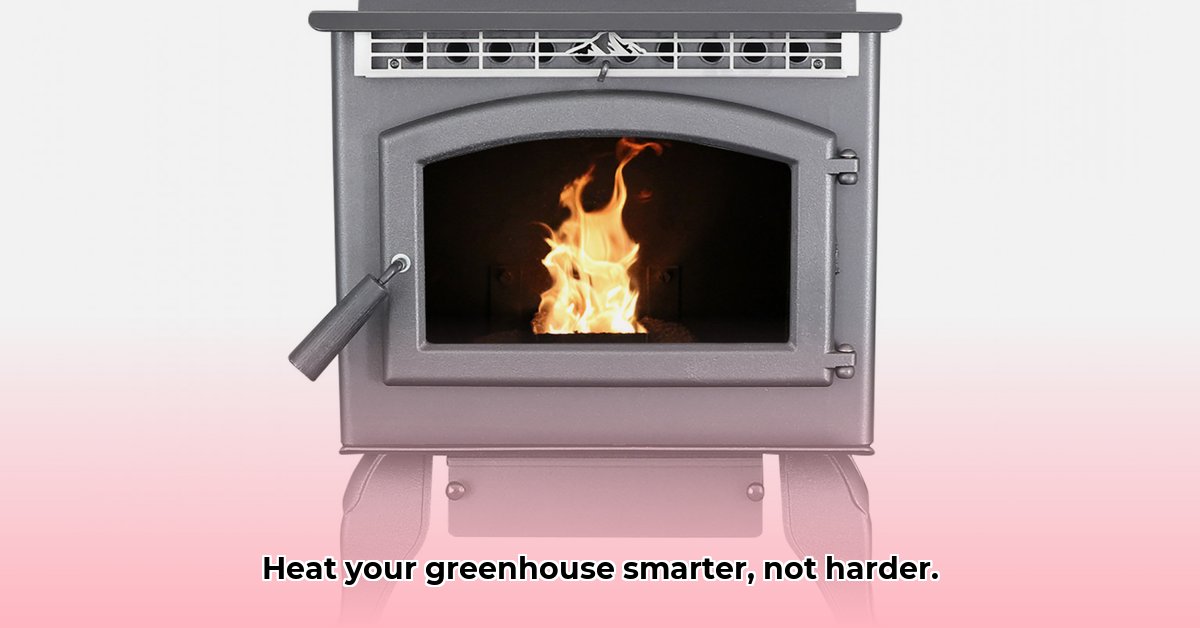
Choosing the Right Pellet Stove for Sustainable Agriculture
Thinking about eco-friendly and cost-effective ways to heat your greenhouse? A pellet stove from Tractor Supply could be the solution. But with various models available, choosing the right one requires careful consideration. This guide helps you select, install, and maintain a pellet stove for optimal performance and safety, ultimately boosting your farm's sustainability. Don't just heat your greenhouse; heat it smartly. Learn more about greenhouse lighting options here.
Key Features to Consider
Before visiting Tractor Supply, assess your needs. Greenhouse size, climate, and desired temperature control all influence your choice. Look for these key features:
- High BTU Output: (British Thermal Units – a measure of heat energy) Higher BTUs mean more heat for larger spaces or colder climates.
- Low Emission Rating: Choose a model with low emissions to minimize your environmental impact.
- Large Fuel Capacity: A larger hopper means fewer refills, saving time and effort.
- Programmable Thermostat: Precise temperature control saves fuel and optimizes plant growth.
- Safety Features: Automatic shutoff mechanisms and other safety features are crucial for preventing accidents.
Remember, a knowledgeable Tractor Supply associate can help you find a model that matches your farm's specific requirements. A poorly chosen stove can lead to inefficiency and safety risks.
Installing Your Pellet Stove: A Step-by-Step Guide
Proper installation ensures both safety and optimal performance. Improper installation may lead to dangerous situations. Follow these steps religiously:
- Check Local Codes: Begin by verifying your local building codes and regulations concerning pellet stove installation. Requirements vary by region.
- Location Selection: Choose a well-ventilated area away from flammable materials. Maintain adequate clearance around the stove for safety.
- Professional Installation (Highly Recommended): While DIY is possible, professional installation is strongly advised, especially for complex setups. It guarantees both optimal performance and safety.
- Dedicated Power Circuit: To avoid overloading circuits and electrical hazards, connect the stove to a dedicated circuit.
- Proper Venting: A correctly installed venting system is crucial. Improper venting is a leading cause of accidents. Ensure proper venting and conduct regular inspections.
- Thorough Testing: After installation, test the system to ensure everything functions as expected. Monitor temperature, airflow, and overall operation. Don't rush this crucial step.
Fuel Sourcing and Management: Sustainable Practices
Sustainable heating extends beyond the stove itself; it includes fuel sourcing. Locally sourced wood pellets reduce your carbon footprint by minimizing transportation. Building relationships with local suppliers supports local businesses and often yields higher quality pellets at competitive prices. Remember to store pellets in a dry place to prevent moisture absorption, which degrades their quality and efficiency.
Maintenance and Troubleshooting: Ensuring Longevity
Regular maintenance guarantees your stove's longevity and efficiency. Here's a maintenance schedule:
- Ash Pan Cleaning: Empty the ash pan frequently (manufacturer's instructions vary) to prevent buildup, which hinders efficient burning.
- Burn Pot Cleaning: Keep the burn pot clean for optimal combustion and extended lifespan.
- Exhaust System Inspection: Regularly inspect and clean the exhaust system. It's vital for safety and performance.
- Hopper Check: Regularly check the pellet hopper for blockages which could shut down your system.
Safety First: Prioritizing Safety on Your Farm
While pellet stoves offer sustainable heating, safety is paramount. Implement these safety practices:
- Carbon Monoxide Detector: Install and regularly test carbon monoxide detectors. This is a critical safety measure.
- Unattended Operation: Never leave a burning pellet stove unattended.
- Flammable Materials: Keep all flammable materials far away from the stove.
- Education: Ensure all farmhands are well-informed on proper operation and safety procedures.
Environmental Impact and Cost-Benefit Analysis: A Balanced Perspective
The initial cost of a pellet stove might seem high, but operational costs are likely lower than propane or electricity in the long run. This translates into considerable savings. Furthermore, using wood pellets reduces your carbon footprint compared to fossil fuels. However, a comprehensive cost-benefit analysis is crucial, considering fuel costs, maintenance, and the stove's lifespan. Compare this to the costs of other heating methods.
Case Studies (Future Expansion)
This section will be expanded with real-world examples of farms successfully using pellet stoves from Tractor Supply, showcasing quantifiable results like increased crop yield and reduced energy bills.
Conclusion: Embracing Sustainable Heating
A pellet stove from Tractor Supply offers a sustainable and potentially cost-effective heating solution for your farm. However, careful planning and consideration are essential. Weigh the pros and cons, seek advice from experts, and remember, informed decisions are pivotal for successful sustainable agriculture.